Are you having problems with your potato plant falling over? This can be troublesome for many gardeners as it’s only reasonable to worry that your crop is dying and you won’t have a successful potato harvest. There are several reasons why this happens.
Don’t worry, we are here to provide you with all the necessary information. Read on to learn about 10 reasons behind your potato plants falling and how you can solve these issues.
Let’s get started!
Contents
Potato Plant Falling Over Explained!
Potato shedding may be roughly classified into two categories: mature and immature. It’s very typical for mature potatoes to fall. The plant’s leaves and stems will wilt and die off so that its roots may concentrate on feeding the subterranean tubers.
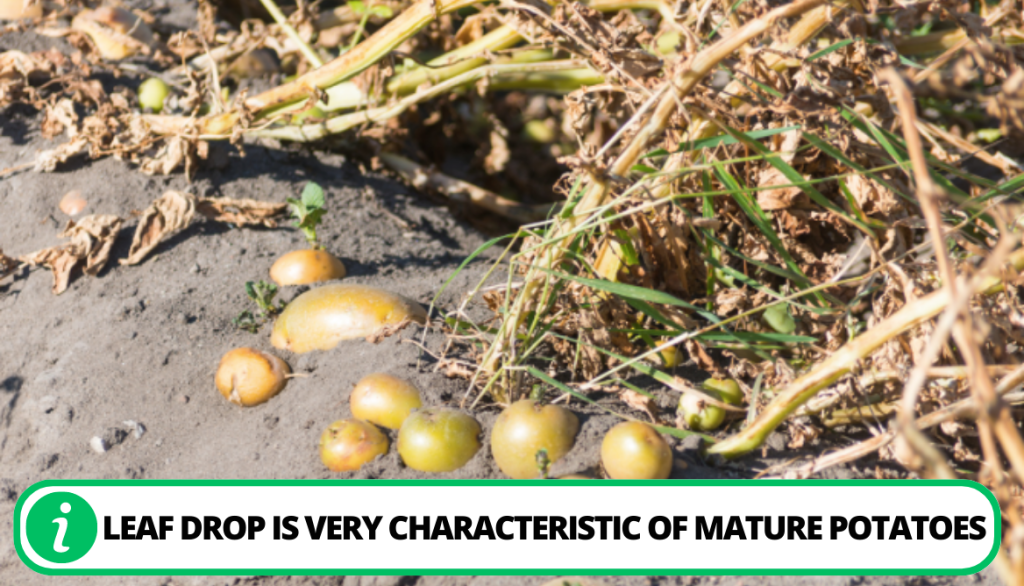
If the plants are still immature and fall down, it may be due to other alarming reasons which are discussed below.
10 Reasons Revealed: Potato Plants Falling
Potatoes are easier than most plants to cultivate in a backyard or garden. If you take good care and nurture healthy potato plants, you may get more than two pounds of potatoes from each plant.
However, the tops of most potato plants might topple over and cause trouble from time to time. There are a number of possible causes for this. Let’s look at the top ten reasons for the collapse of your potato plants.
1. Tall Potato Plants From Excess Nitrogen
Potatoes, like other plants, require nitrogen in the soil in order to flourish. If you use excessive amounts of nitrogen, your potatoes will grow enormous tops. This increases the likelihood of potato plants falling or flopping over because the stems and leaves will be too heavy.
If you find that your plants have particularly lush green foliage, you may want to reduce the amount of manure you apply in your garden.
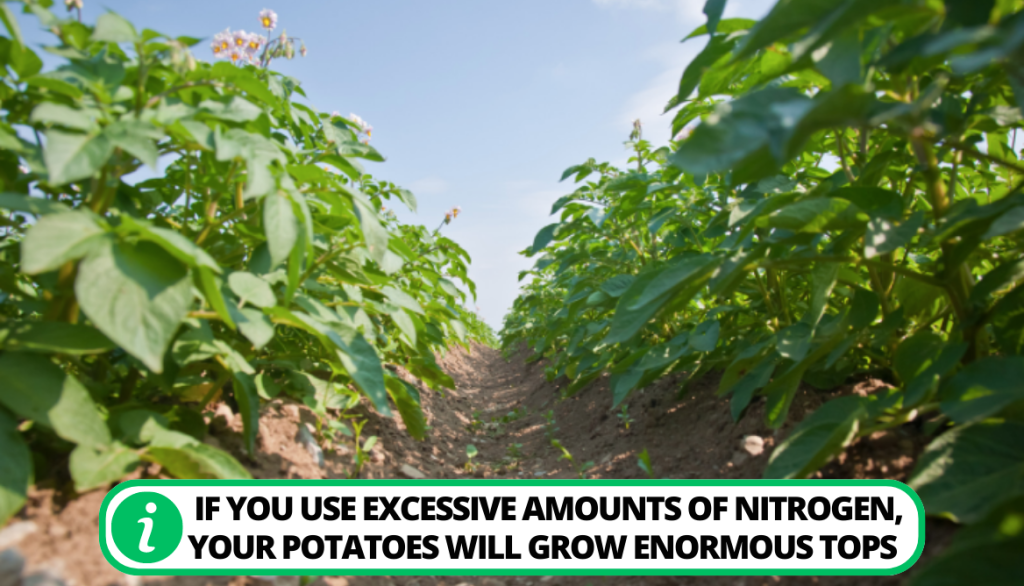
2. There is Insufficient Dirt Surrounding the Plant’s Roots
If potato tubers are planted too deeply or close to the surface of the soil, the potato crop will struggle until the soil is ‘hilled’ to give the tubers more area to grow and offer support for the plant.
- The ideal time to begin hilling is when plants have reached a height of one foot.
- You may hill your plants by piling soil around their bases while still allowing at least one pair of leaves and a few inches of stem to protrude.
- You can also plant potatoes a bit deeper than usual.
- The buried potato plant stems will send out new roots, strengthening the root system and allowing it to sustain the plant.
3. Drought
The tips of your potato plants might also die from the drought. Let’s discover why:
- Plant tissue: The first difficulty is that turgor, the pressure within plant tissue that keeps stems stiff, cannot be maintained if plants are not given enough water. When this occurs, the plant’s stalks and leaves begin to droop and eventually die.
- Foothold: The soil loosens when it dries out during a drought, the roots of your potato plants have less of a foothold and are more likely to topple over. If your soil is too dry, your plants might potentially flip over, exposing their roots.
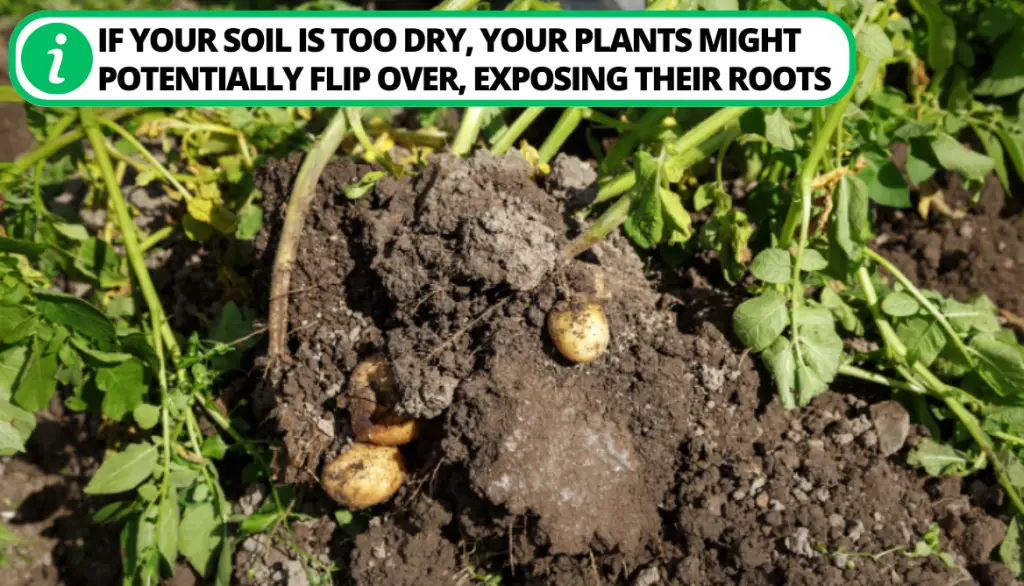
4. Strong Gusts
Strong gusts are one of the top reasons why potato plants fall. They can damage your potato plant by snapping the plants’ stems or blowing the tips of the plants over.
After a windstorm, plants may recover and straighten themselves if their stems were not snapped. If you prune a broken stem, it will continue to grow. There is some advice on how to help your plants:
- A stake can be used to stabilize a top that has been blown over by the wind and allow it to recover.
- Hilling the potatoes to give their stems more stability is another option.
5. Severe Rainfall
Potato plants are vulnerable to being blown over by strong rain. There is a risk that your potato plants won’t be able to bear the weight of the rain and may topple over.
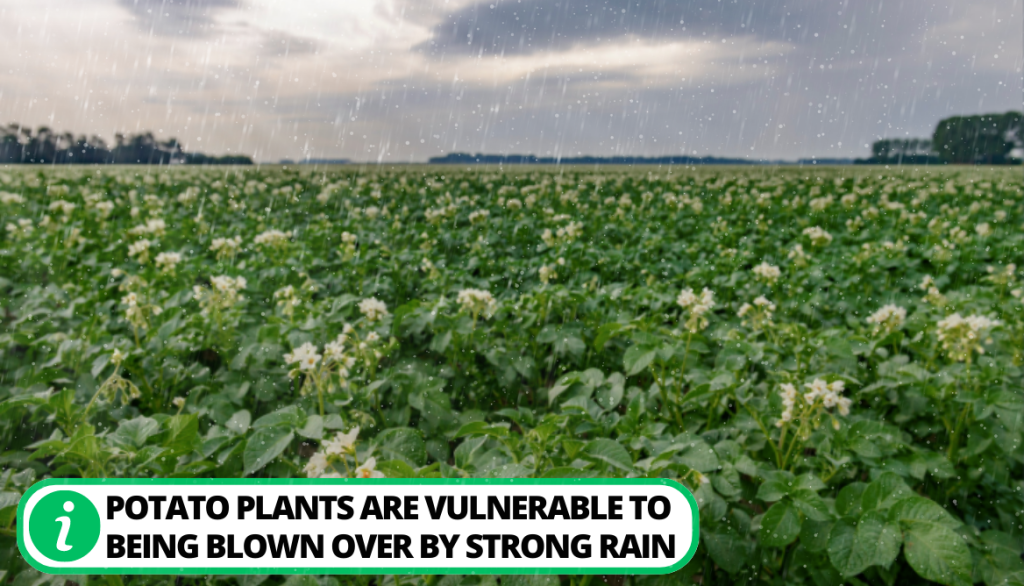
If the stems are not damaged, they have a chance of straightening out again like potato tops that have been blown over by the wind.
6. Insufficient Sunshine
Sunshine is critical to potato plant growth. Potatoes grown in dim conditions may turn into leggy potato plants in an effort to reach the light, as their stalks will be longer than usual.
Weak stems can’t hold the weight of the expanding plant, thus they snap or bend easily as the plant grows. So, plant potatoes in a spot that gets at least six to eight hours of sun a day to keep them from getting leggy and toppling over.
7. Insects
Damage from pests may damage your potato plants to the point where they topple over. The following are examples of frequent culprits:
Colorado Potato Beetle
These insects hibernate underground during the winter and emerge in the spring, right around the time new potato tubers are emerging. The adult beetles have a yellowish-tan color with black stripes and a strong exoskeleton. On the underside of leaves, the adult lays clumps of small orange eggs.
The potato worm eats the leaves and flowers of the potato plant after hatching from its eggs. These orange/red larvae develop swiftly, feeding on the plants until they fall to the ground and burrow into the soil, where they will eventually pupate.
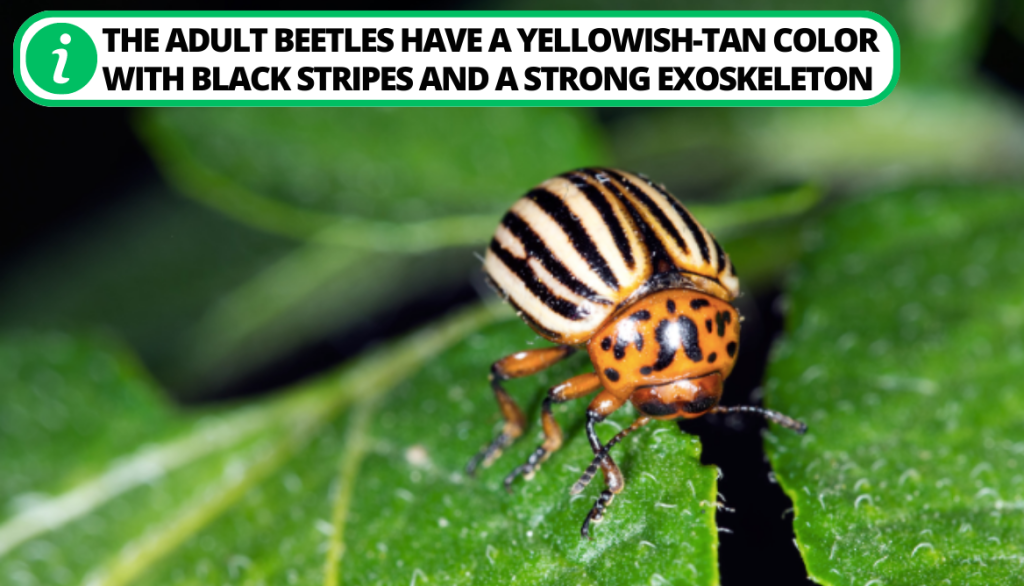
Cutworms
Cutworms are soil-dwelling insects that feed on young, vulnerable plants. At ground level, they prune the plants. Add a layer of diatomaceous earth around your potato plants as soon as they begin to emerge from the ground to deter cutworms.
8. Disease
When your potatoes have potato blight, the tops may wilt and fall over. The Phytophthora infestans fungus is responsible for this illness.
- This mold can spread through the air or the soil.
- When conditions are appropriate, generally during cold and rainy weather, the fungal spores will reach your potato plants and begin aggressively developing.
- Tiny black patches appear first, but the blight spreads rapidly.
- The leaves eventually die as the black spots become larger and move from one leaf to the next.
- The spores can also eat away at the tubers that are buried in the ground.
9. Full Maturity of Potatoes
When potato plants reach maturity, they naturally wither and die, as the tubers no longer require food from the leaves and stems. In most cases, this occurs in the autumn.
- The average lifespan of a potato plant is between 80 and 160 days.
- They may reach a maximum height of 1.5 – 2 feet.
- A frequent indicator of plant maturity is a gradual yellowing of the stem and upper leaves.
- When the potatoes are ready to be harvested, they may even bloom.
The plants have reached the end of their lifespan, so there is no need to worry. The last remaining task is to gather the produce.
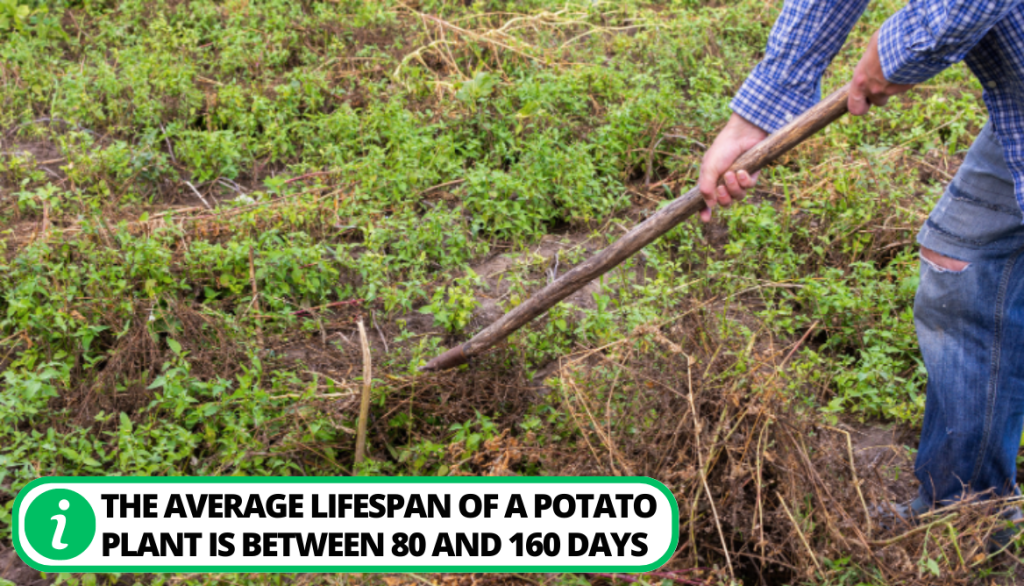
10. Multiple Components Combined
Your plants may be toppled not by any one of these causes alone, but by a confluence of several factors.
It’s possible that your potato plants have been doing great, but then a week of dry weather causes the stem to weaken, and then a day of severe winds causes many of the plants to fall over.
These are unfortunate events. What you can do is tie your plant to the stakes and make a wall of straw so it can be protected.
Precautions To Take Against Potato Plants Fall
There are a number of potential causes for your potato plants falling. But first, you may give the plant a helping hand by mounding dirt around it. The plant can remain erect until the root of the issue is investigated.
There are several potential causes for a potato plant to collapse as mentioned above. Some steps to prevent them are:
1. Avoid Improper Watering
Potatoes are notoriously difficult to water properly. Excessively watering potato plants causes the soil to become soggy, which prevents oxygen from reaching the plant’s roots.
Underwatering potato plants causes the leaves to curl, which leads to the plant dying. You should water your potato plants deeply yet seldom for the best results. The soil, not the plant itself, should be watered.
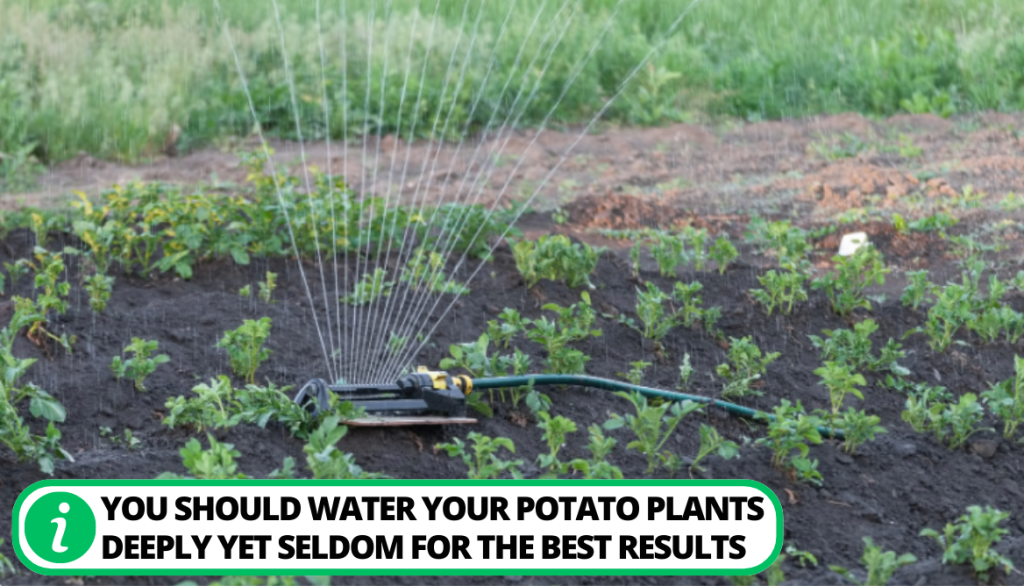
2. Dealing With Insects
The damage done by the insects such as the Colorado Potato Beetle will cause your potato plants to fall. They feed voraciously on potato leaves, which can ultimately kill your plant. Here’s how to avoid it:
- As soon as the first adult Colorado potato beetles arrive in the spring, you should either hand-pick them and put them in a pail of soapy water. Or apply insecticides specifically designated for Colorado potato beetles.
- You can try pruning potato plants, although we recommend keeping that as a last option.
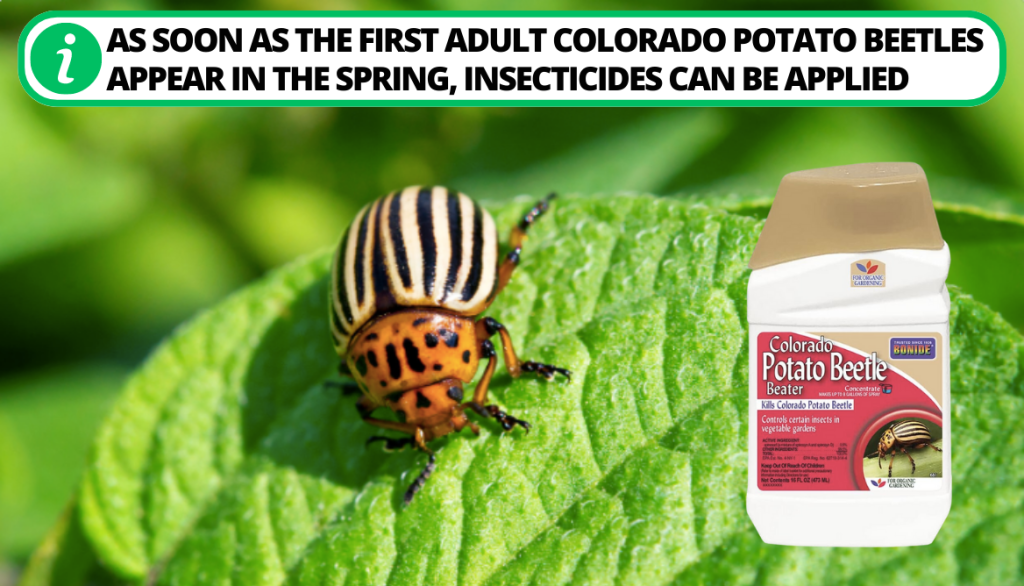
3. Natural Factors
Storms, high winds, and heavy downpours can cause damage to potato plants, especially if they are frail or weak. It also matters what kind of potatoes you planted.
The bushy types of potatoes are far more resilient to environmental disasters. If it’s too hot above 80 degrees Fahrenheit, your potato plants may wilt and die. This is true much more for plants kept in containers.
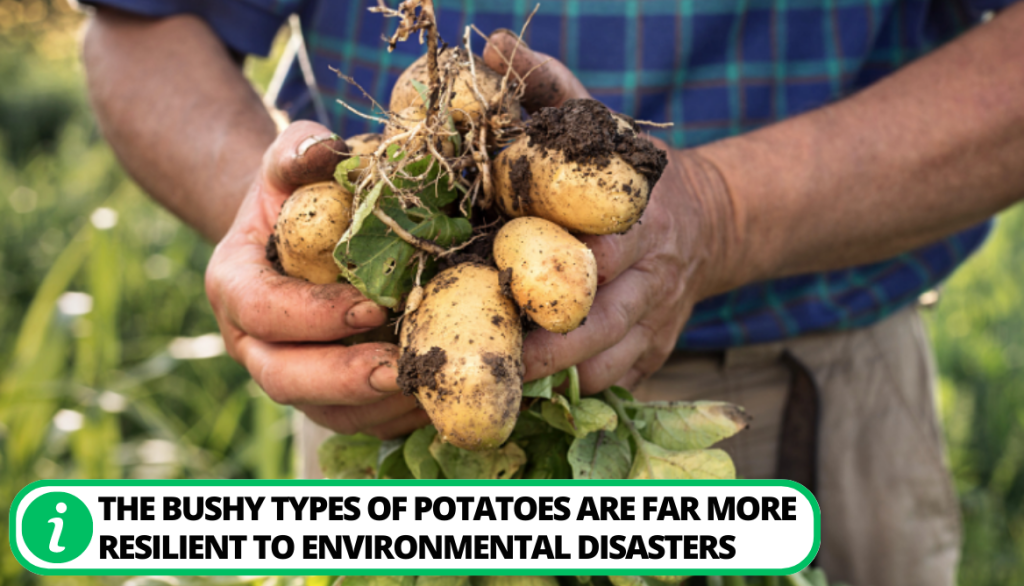
FAQ
Should you cut the tops off potato plants?
You should not cut the tops off potato plants as this can reduce the growth of the potato plant and tubers.
Why are my potato plants turning yellow and falling over?
There are a number of reasons why your potato plant falls including nutrient deficiencies, overwatering or waterlogged soil, diseases, or pest infestation.
Are potato plants supposed to be tall?
A potato plant on average should be around 2 feet tall. If it grows much longer than that, it will cause the potato plants to fall.
How do I protect my potato plants?
You can protect your potato plants all around by giving them the correct amount of water, which is about 1-2 inches of water a week. Also, keep your soil temperature below 80 F.
Conclusion
There are various reasons behind potato plants falling over. One of the main reasons is simply that the plants are now mature and ready to harvest. Other reasons could be excess nitrogen and insufficient sunshine can cause the stalk of the plant to grow very tall, making the plant leggy. It might be one of these factors or a combination of many that are causing the problem.
Luckily, there are some steps you can take to fix this or prevent it from happening altogether. Taking a pile of dirt and mounding it around the base of the plant can help it stand firm. Also, be sure to avoid improper watering and be on the lookout for pests and diseases, such as cutworms.
How did you keep your plant safe? Let us know in the comments!
- How to Get Potatoes to Sprout Eyes: Detailed Growing Guide with 3 Options - July 31, 2023
- Weight of a Medium Potato: Revealed in Detailed Guide - July 29, 2023
- Maris Piper Potatoes: 9 Substitutes You Should Know About - July 27, 2023
Hello! I’m Jessica Zander, a garden coach and consultant based in the Boston area (zone 6b), offering virtual consultations across the country and Canada.
I’ve been passionate about gardening since the early 1990s, and in 2022, I launched You Can Do It Gardening to empower individuals to feel more confident in their gardening endeavors.
Following a 30-year career in nonprofit finance and operations, I transitioned out of that field in mid-June of 2023 due to the growing demand for coaching services. Interestingly, my years of presenting financial statements to boards and finance committees proved to be valuable experience for teaching people about gardening! I enjoy sharing skills, providing guidance and suggestions, and collaborating efficiently with clients to make significant improvements to their outdoor spaces, both small and large. I also regularly teach at the Arlington Continuing Education and Cambridge Adult Education.
My approach is direct and practical, akin to Mary Poppins, but tailored to your garden. Clients find satisfaction in saving money and taking pride in their own gardening achievements.

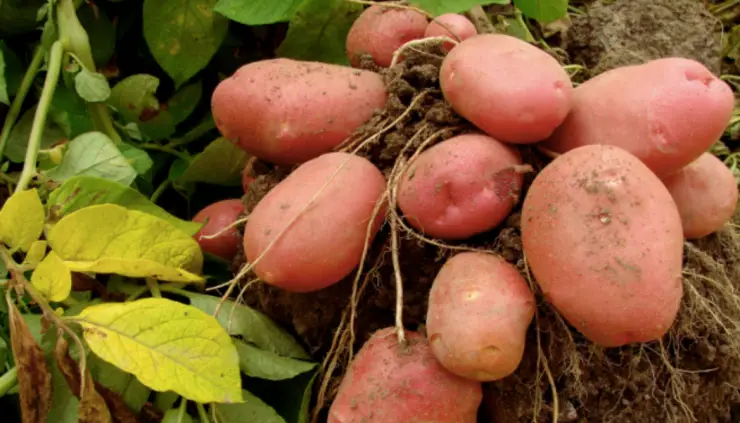

Add comment